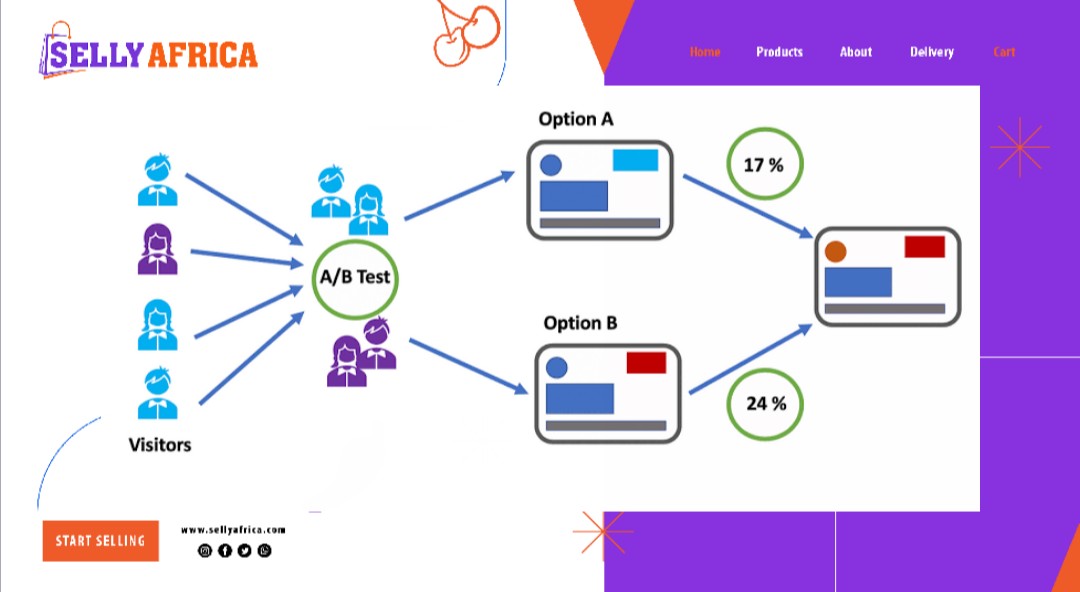In the competitive world of e-commerce, standing out and capturing the attention of potential customers is crucial. One powerful tool in the arsenal of digital marketers is A/B testing, a method that can significantly enhance the effectiveness of your advertising campaigns and boost conversions. This article will delve into the concept of A/B testing and guide you through optimizing your e-commerce ads for maximum impact.
Understanding A/B testing
A/B testing, also known as split testing, is a scientific approach to comparing two versions of an element within an experiment. In the context of e-commerce advertising, you can use A/B testing to compare different variations of your ad campaigns, such as:
- Headlines: Headline A vs. Headline B
- Images/Videos: Image A vs. Image B
- Descriptions: Description A vs. Description B
- Calls to Action (CTAs): CTA A (“Buy Now”) vs. CTA B (“Shop Now”)
Why A/B testing matters for e-commerce Ads
Think of A/B testing as a constant conversation with your audience. Through testing, you can learn what resonates with them, what grabs their attention, and ultimately, what motivates them to click and buy. Here’s why A/B testing is crucial for e-commerce success:
- Uncover hidden gems: Your initial assumptions about the “perfect” ad might not always be right. A/B testing unveils which elements truly resonate with your audience, helping you discover hidden gems that could significantly boost conversions.
- Data-driven decisions: A/B testing removes guesswork from the equation. By relying on data, you can make informed decisions about which ad variations deliver the best results, maximizing your return on investment (ROI).
- Continuous improvement: A/B testing is an ongoing process. Once you identify a winning ad variation, you can continue testing new elements to further refine your strategy and keep your ads performing at peak efficiency
Setting up your A/B test
To set up an A/B test for your e-commerce ads, follow these steps:
- Identify your goal: Clearly define what you want to achieve with your ad campaign. It could be increasing click-through rates, boosting sales, or improving sign-up rates.
- Create variations: Develop two versions of your ad. Change one element at a time, such as the image, the ad copy, or the call to action (CTA).
- Segment your audience: Divide your audience randomly to ensure that each group is statistically similar. This way, the results won’t be skewed by differing demographics.
- Run the test: Launch both versions of your ad simultaneously. This is crucial to ensure that external factors affect both versions equally.
- Collect data: Use analytics tools to track the performance of each ad variation. Pay close attention to metrics that align with your goals.
- Analyze results: After a significant amount of data is collected, analyze the results to see which version met your goal more effectively.
Analyzing the data
The data from your A/B test will tell you which version of your ad resonates more with your audience. Look for statistically significant differences in performance. If Version B leads to a higher conversion rate than Version A, then you know that the changes you made were effective.
Implementing the findings
Once you’ve identified the winning ad variation, you can implement it in your larger campaign. But the process doesn’t stop there. Continuous A/B testing is key to ongoing optimization. Regularly test new variations to refine your ads and improve conversions over time.
Conclusion
A/B testing is a valuable strategy for any e-commerce business looking to optimize its advertising efforts. By methodically testing different ad elements and using data to drive decisions, you can enhance the performance of your campaigns and achieve better conversion rates. Remember, the goal is to learn about your audience and what appeals to them, so never stop testing and improving.
